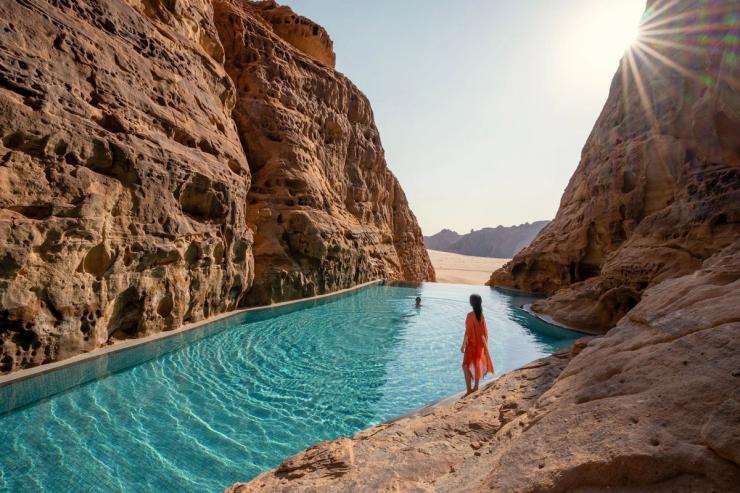The News
The Saudi UNESCO World Heritage site AlUla is preparing for its next phase of development, almost tripling its number of hotel rooms over the next five years, while seeking to remain exclusive, a top official said.
“We want to be responsible in how we develop the destination,” Phillip Jones, chief tourism officer at the Royal Commission for AlUla, told Semafor. “It’s been around for 7,000 years — we need to keep it around for another seven. We don’t ever want to be a mass tourism destination.”
AlUla has morphed from a sleepy archaeological site into Saudi Arabia’s adventure playground over the past decade, where visitors revel in raves and practice sunrise yoga in the same valley the Nabataeans once roamed. The area, roughly the size of Belgium, currently has around 1,200 rooms and will reach 3,000 and 5,000 rooms by 2030, Jones said.
To support that growth, 21 new projects worth about 6 billion riyals ($1.6 billion) will be opened to private investors soon, mostly in hospitality and infrastructure such as water, sewage, and power, he added. But the commission plans to keep annual visitor numbers to no more than 1 million by 2030, with international tourists spending an average of about $1,000 a day.
The approach contrasts with broader efforts underway in the kingdom. Saudi Arabia is investing heavily in the tourism industry to help diversify its economy. It has already hit its 100 million visitor target under Vision 2030 last year, and is looking at boosting it further.
Know More
AlUla is attracting an elite clientele: “We had 400 private planes last year,” Jones said. “Lots of billionaires — can’t name them but you would know who they are — who come to AlUla and fall in love with it. Some have been back three or four times.”
The draw is a sparsely populated, protected landscape that caters to visitors interested in archaeology, art, nature, and wellness, as well as festivals and concerts featuring global stars like Alicia Keys and Andrea Bocelli.
Jones — a former Clinton administration official who helped craft the US national tourism strategy before leading Dallas’ transformation into a meetings and conventions hub — said about a third of AlUla’s visitors return because the commission keeps its events calendar fresh.
“We activate the destination,” he said, listing seasonal festivals in the area. People are demanding experiences where they “leave enlightened and educated about something they didn’t know before.”


